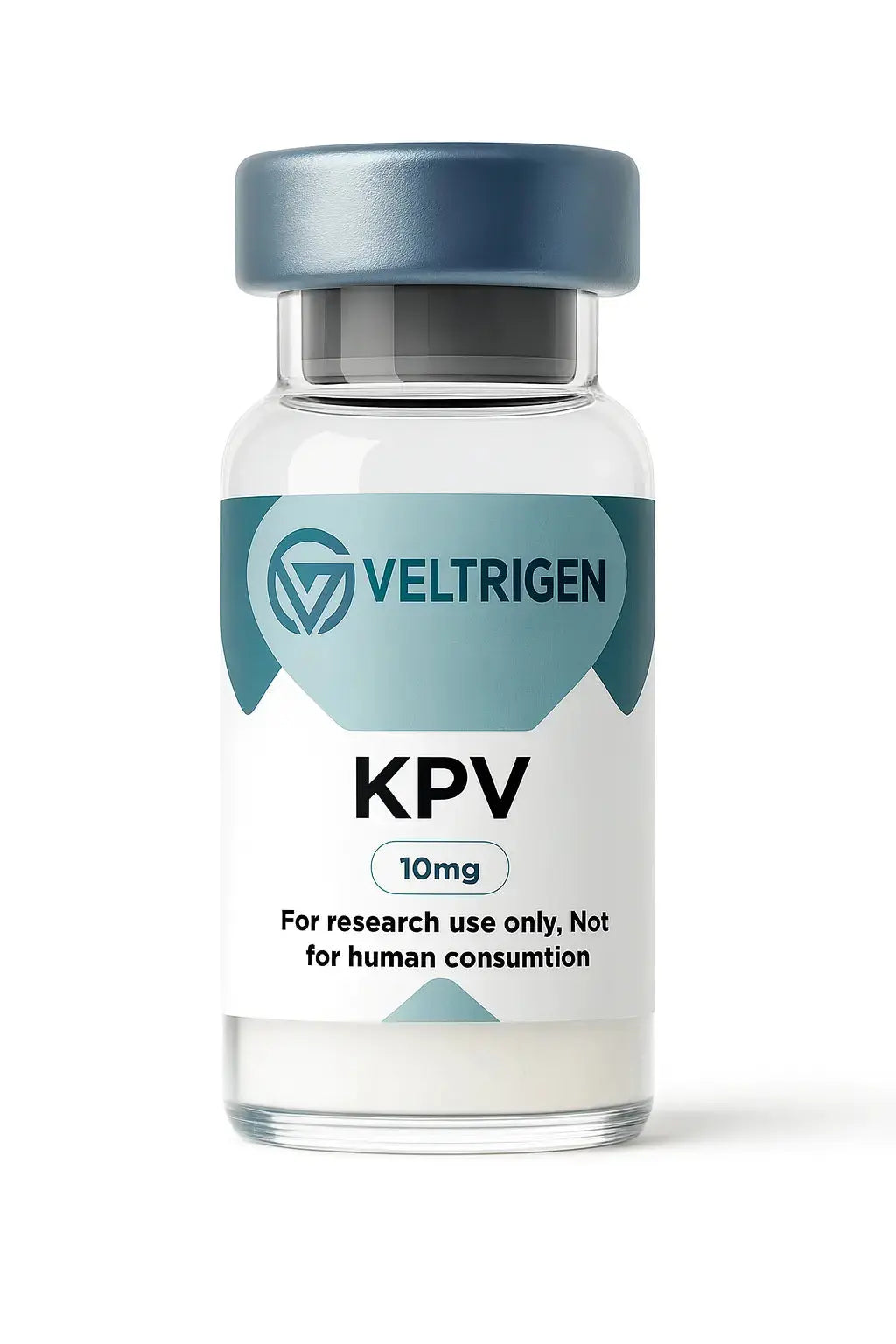
BPC-157 vs. KPV: A Research Comparison of Two Promising Peptides
Share
Introduction
In the evolving field of peptide research, BPC-157 and KPV stand out as two compounds attracting growing scientific interest. Both are being studied for their potential in tissue regeneration, inflammation management, and gut health. While they share overlapping areas of research, their mechanisms and applications are distinct. This article provides a head-to-head comparison of BPC-157 vs. KPV for research purposes.
What is BPC-157?
BPC-157 (Body Protection Compound-157) is a synthetic peptide fragment derived from a protein found in gastric juice. Preclinical studies suggest it may play a role in:
-
Supporting tendon and ligament repair in animal models.
-
Enhancing angiogenesis (formation of new blood vessels).
-
Promoting gut mucosal healing under experimental conditions.
These findings have made BPC-157 a central focus in peptide research for tissue regeneration and gastrointestinal protection.
What is KPV?
KPV (Lysine–Proline–Valine) is a tripeptide fragment derived from the larger hormone alpha-MSH (melanocyte-stimulating hormone). Research has focused on its anti-inflammatory and antimicrobial effects, including:
-
Modulating the immune response in experimental models of inflammation.
-
Reducing gut-related inflammatory markers in animal studies.
-
Demonstrating antimicrobial activity in laboratory research.
Because of these properties, KPV is being investigated for conditions where inflammation plays a central role.
Key Differences Between BPC-157 and KPV
| Feature | BPC-157 | KPV |
|---|---|---|
| Origin | Derived from body protection compound in gastric juice | Derived from alpha-MSH hormone fragment |
| Primary Research Focus | Tissue repair, angiogenesis, gut lining protection | Anti-inflammatory activity, immune modulation, antimicrobial effects |
| Tissue Regeneration | Strong preclinical evidence for tendon, ligament, and vascular support | Limited evidence in direct tissue regeneration |
| Gut Health | Shown to protect and accelerate gut lining healing in animal models | Studied for reducing gut inflammation and colitis models |
| Inflammation Control | Indirectly via healing response | Directly via immune pathway modulation |
Synergistic Potential in Research
While BPC-157 is studied primarily for regeneration and KPV for inflammation control, there may be value in examining their combined use in experimental models. The dual focus on repair (BPC-157) and immune balance (KPV) could represent a promising research direction for future studies on chronic injury and inflammatory conditions.